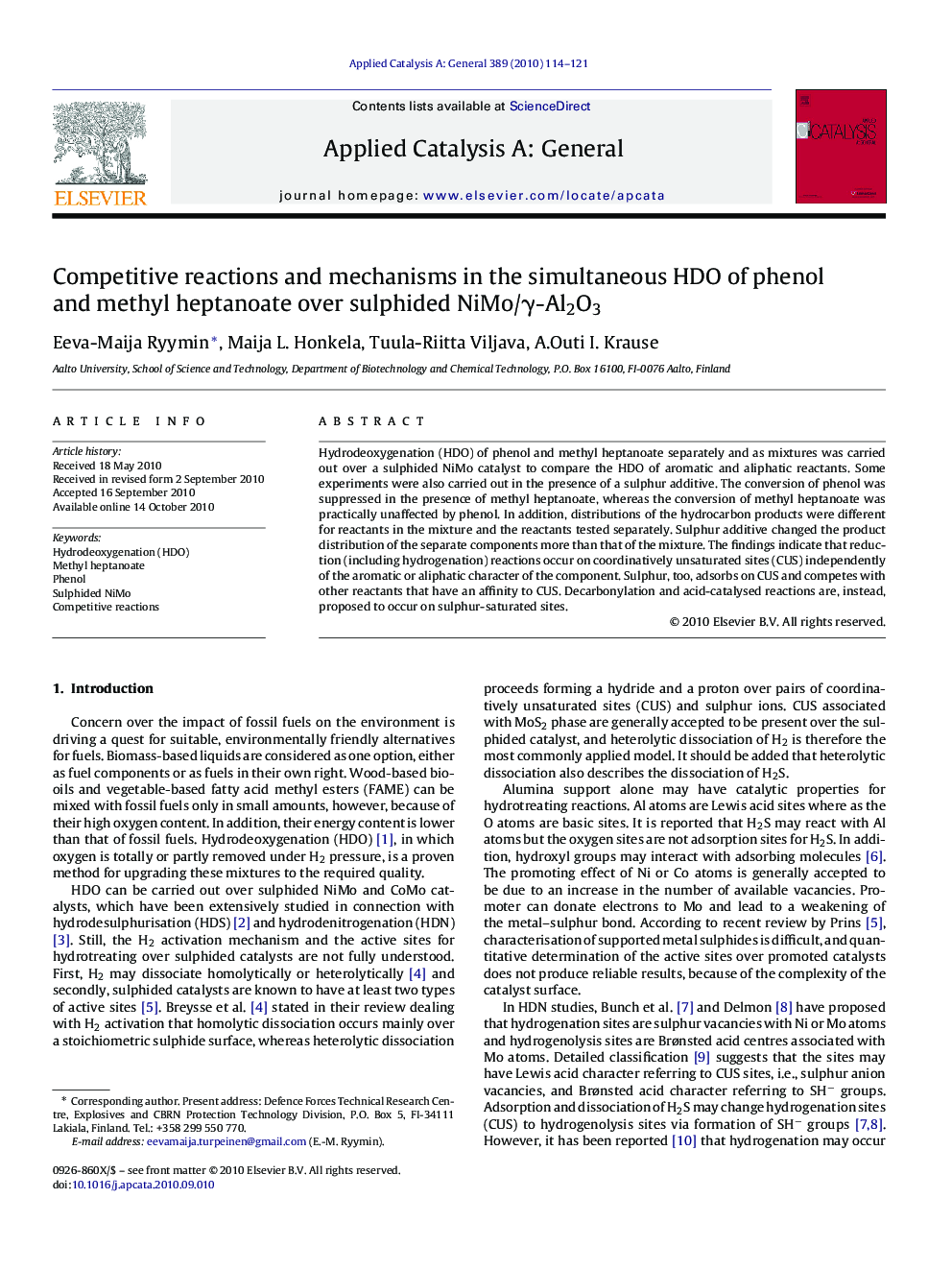| Article ID | Journal | Published Year | Pages | File Type |
|---|---|---|---|---|
| 41887 | Applied Catalysis A: General | 2010 | 8 Pages |
Hydrodeoxygenation (HDO) of phenol and methyl heptanoate separately and as mixtures was carried out over a sulphided NiMo catalyst to compare the HDO of aromatic and aliphatic reactants. Some experiments were also carried out in the presence of a sulphur additive. The conversion of phenol was suppressed in the presence of methyl heptanoate, whereas the conversion of methyl heptanoate was practically unaffected by phenol. In addition, distributions of the hydrocarbon products were different for reactants in the mixture and the reactants tested separately. Sulphur additive changed the product distribution of the separate components more than that of the mixture. The findings indicate that reduction (including hydrogenation) reactions occur on coordinatively unsaturated sites (CUS) independently of the aromatic or aliphatic character of the component. Sulphur, too, adsorbs on CUS and competes with other reactants that have an affinity to CUS. Decarbonylation and acid-catalysed reactions are, instead, proposed to occur on sulphur-saturated sites.
Graphical abstract.Figure optionsDownload full-size imageDownload high-quality image (93 K)Download as PowerPoint slideResearch highlights▶ Product distribution changes in the mixture compared to reactants tested separately. ▶ Reduction reactions occur on coordinatively unsaturated sites (CUS). ▶ Acid-catalysed and decarbonylation reactions occur on sulphur-saturated sites. ▶ Sulphur adsorbs on CUS and affects the reactions occurring on these sites.
